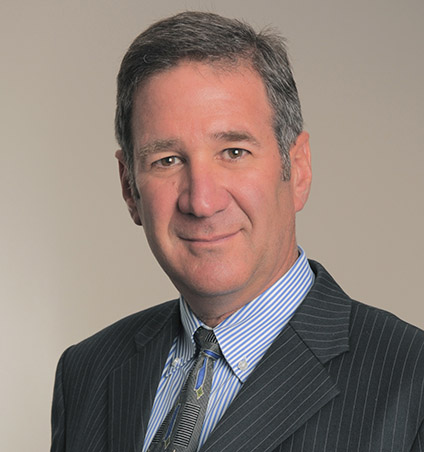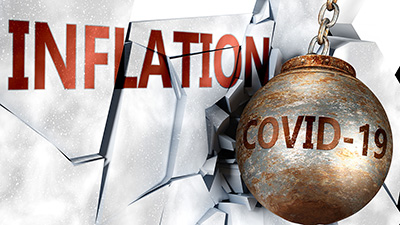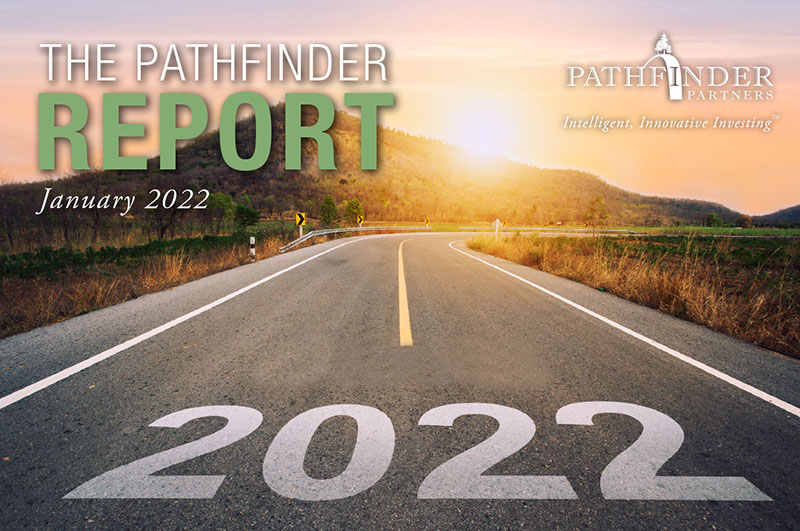Charting the Course
Fed Acknowledges Inflation Isn’t “Transitory” After All
(Even a Blind Squirrel Can Find an Acorn Once in a While)
By Mitch Siegler, Senior Managing Director
 “I’m shocked – shocked – to find that gambling is going on here.” - Captain Renault, played by Claude Rains in “Casablanca”
“I’m shocked – shocked – to find that gambling is going on here.” - Captain Renault, played by Claude Rains in “Casablanca”
We felt a bit like Captain Renault after hearing the Fed’s Federal Open Market Committee (FOMC) statement on December 15. In part, that’s because we’ve been writing about government fiscal and monetary stimulus and inflation on Main Street being much higher than official levels since before the pandemic began and steadily for the past 20 months. So, while it’s gratifying to see a bit more transparency from the Fed, it’s long overdue and sadly, a bit of too little, too late.
Since March 2020, the federal government and the Federal Reserve have teamed up to flood the economy with trillions of dollars. Mizuho Securities calculated that stimulus totaled $5.3 trillion from March 2020 through June 2021. During the same period, the Fed increased its holdings of U.S. Treasuries by $2.5 trillion. And that’s before the recent trillion-dollar infrastructure bill and the $3 to $5 trillion “Build Back Better” bill – depending on whose calculations you believe. (BBB appears to be D.O.A. as of press-time though big spending bills sometimes have nine lives.)
Now, many economists and lawmakers feel the government has gone too far and a plurality of Americans surveyed seem to agree. Several recent polls conclude that, by a two-to-one margin Americans surveyed believe the past couple of years of government fiscal and monetary policy have increased inflation compared to those who believe it has reduced inflation. That’s as plain as the nose on your face for those who’ve bought groceries or gas or paid rent lately. As we’ve said before, what you see at the grocery store is reality.
 In November, U.S. inflation hit a 39-year high with prices 6.8% above those in November 2020, according to the Labor Department’s consumer-price index. While the root causes of today’s inflation differ from inflation from the 1970s and early 1980s, there are similarities. Then, the causes were energy spikes and political issues around oil production, which rippled through the economy through higher producer prices and increased consumer inflation expectations. Now, inflation is a direct result of the pandemic and too much money chasing too few goods – largely the result of the flood of dollars coming out of Washington, D.C.
In November, U.S. inflation hit a 39-year high with prices 6.8% above those in November 2020, according to the Labor Department’s consumer-price index. While the root causes of today’s inflation differ from inflation from the 1970s and early 1980s, there are similarities. Then, the causes were energy spikes and political issues around oil production, which rippled through the economy through higher producer prices and increased consumer inflation expectations. Now, inflation is a direct result of the pandemic and too much money chasing too few goods – largely the result of the flood of dollars coming out of Washington, D.C.
At first, the pandemic was deflationary – crimping both supply and demand – as Americans stayed home and boosted their savings, since there were so few things on which to spend money. Supply chain shocks and labor shortages impacted availability of goods and trillions in stimulus checks gave people more money to spend, stimulating tepid demand. Arguably, stimulus checks in March 2020 when millions of Americans were staying home to tamp down the spread of the virus made good sense. Since then, the combination of low supply and high demand for goods (enabled by continued Federal jobless supports and buckets of money sloshing around) has led to the price increases we’re seeing just about everywhere we look.
To paraphrase the Fed’s argument these many months, “don’t worry, be happy; inflation is ‘transitory’.” This argument has been echoed, ad nauseum, by the Administration. Hope – as the old saw goes – is not a strategy.
Sure, it’s entirely possible that the November 6.8% inflation rate will moderate this year as supply chain issues are resolved, labor shortages ease, semiconductor chips become more available for automobiles, electronics and other products and we put the pandemic in the rearview mirror and return to a more normal life.
But, reverting to the mean is a process and 6.8% will need to fall through 5.8%, 4.8%, 3.8% and 2.8% before it falls below 2%, the Fed’s previous “target” inflation rate. At the risk of stating the obvious, serious moderation in the rate of inflation won’t happen overnight, and many Americans will suffer the pain of higher prices for months – or years – along the way. That view is reinforced by a government report in mid-December showing that wholesale prices rose at a 9.6% clip for the year ending in November. That’s the fastest pace in more than a decade. Since producer (wholesale) costs are the key input for consumer (retail) prices and the producer inflation rate is 41% above the consumer rate, hopes for a rapid plummet in the inflation rate are, shall we say, a tad optimistic, maybe even fantastical.
 Now, the Fed does have some important tools at its disposal to cool the economy and tamp down inflation. Following the December 15 announcement, it’s clear that the previous consensus about rates remaining lower for longer would need to be reexamined. And the idea that there wouldn’t be any rate increases until 2023 was flat-out wrong. The Fed will be moving aggressively to reduce its purchases of U.S. Treasury bonds, which will likely come to a screeching halt by March. And the majority of FOMC members and many economists and Wall Street analysts are now calling for three interest rate increases in 2022.
Now, the Fed does have some important tools at its disposal to cool the economy and tamp down inflation. Following the December 15 announcement, it’s clear that the previous consensus about rates remaining lower for longer would need to be reexamined. And the idea that there wouldn’t be any rate increases until 2023 was flat-out wrong. The Fed will be moving aggressively to reduce its purchases of U.S. Treasury bonds, which will likely come to a screeching halt by March. And the majority of FOMC members and many economists and Wall Street analysts are now calling for three interest rate increases in 2022.
Closer to home, housing costs, including apartment rents and the cost of homeownership, have been rising at a 5% annual pace these past few months, according to Goldman Sachs economists. We’ve been seeing apartment rent growth at double these levels in many of the markets where we operate since early fall. While we forecast cooling rent growth next year, this is unlikely to turn on a dime since many markets have had occupancy rates well above the 95% equilibrium level throughout the pandemic.
As we start the new year, we have much to be thankful for. Our health, our freedom, our families and our friends, for starters. We’re also thankful that we didn’t listen to the Fed these past two years because we might have halted apartment acquisitions and loaded up on floating rate debt. Instead, we acquired ten properties last year and financed nearly all of them with long-term, fixed rate loans. Those loans are going to be pretty sweet in the years ahead when rates could rise to much higher levels.
Warm wishes to all for a healthy and happy 2022.
Mitch Siegler is Senior Managing Director of Pathfinder Partners. Prior to co-founding Pathfinder in 2006, Mitch founded and served as CEO of several companies and was a partner with an investment banking and venture capital firm. He can be reached at msiegler@pathfinderfunds.com.
Share this Article
IN THIS ISSUE
PATHFINDER PARTNERS INCOME FUND, L.P.
A Stablized Multifamily Fund
CHARTING THE COURSE
Fed Acknowledges Inflation Isn’t “Transitory” After All
(Even a Blind Squirrel Can Find an Acorn Once in a While)FINDING YOUR PATH
Reflections on an Interesting Year
GUEST FEATURE
A Housing Crisis Q&A
ZEITGEIST
Sign of the Times
TRAILBLAZING
The Maddox, Mesa (Phoenix), AZ
NOTABLES AND QUOTABLES
A Fresh Start
